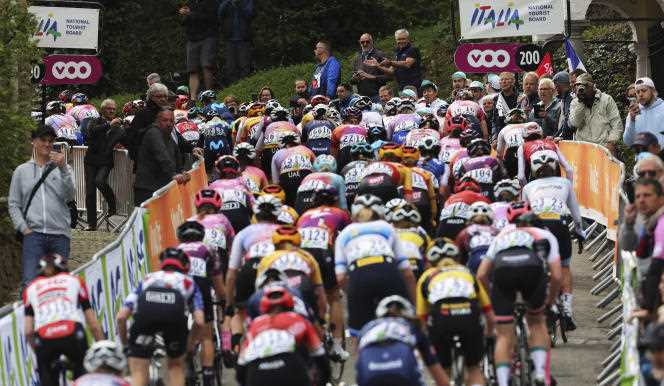On Sunday April 24, the women’s peloton set off from Liège-Bastogne-Liège, Belgium, the last of the spring classics, before opening the chapter of stage races a few days later in the Basque Country. In 2022, the calendar of the Women’s World Tour (WWT), the first division circuit, has expanded considerably with seventy-one days of racing, culminating in the return of the Women’s Tour de France at the end of July.
Director General of the International Cycling Union (UCI), Amina Lanaya analysis, for The worldthe development of women’s cycling, which, by its own admission, has experienced unexpected enthusiasm in recent years.
The number of WWT stage races has increased from seven scheduled in 2021 to twelve this year. Was this one of the UCI’s priorities?
It’s true that we want to have the greatest possible balance between one-day races and stage races. We had the Giro Donne [déclinaison féminine du Tour d’Italie]which had to be demoted last year to ProSeries for security and organizational issues, but also for television broadcasts that were not respected [l’UCI impose un minimum de quarante-cinq minutes de couverture en direct]. We are very strict on this level.
We have the objective of ensuring this balance, but before accepting the registration of any event on the calendar we must have an overall vision of it: women’s cycling still needs visibility.
We see more and more male races having a female counterpart. Isn’t this system simpler for spectators by allowing them to have reference points?
When they saw the success of Paris-Roubaix last year or the launch of the Tour de France, more and more organizers of men’s UCI World Tour events – such as the Tour de Romandie [dont la première édition féminine aura lieu du 7 au 9 octobre 2022] – told us: “We would also like to set up a women’s race. » There is a real enthusiasm and women’s cycling is also attracting more and more sponsors.
For the general public, to think that there is a Tour de France for men, a Tour de France for women; a women’s Tour of Flanders, a men’s Tour of Flanders… that’s logical. It’s easier to understand. But we must not forget that we have organizers who have already invested a lot in women’s cycling and who only organize women’s races. They should be encouraged to continue.
Everywhere, we really need, once again, visibility and this promotion of women’s cycling. We have to be able to show the best teams, the best riders in the best events. But we are not yet at the level of men’s cycling, we cannot be on two fronts at the same time.
Once again, our ambition is to have as many high-level professional races as possible.
Do you have the impression that on the television scale, because that is also the sinews of war, there is a change in mentality? That they are more open to the idea of covering a women’s event?
Clearly, there is a change in mentality. It is also perceptible at the scale of society or of large companies that invest in sponsorship. From now on, the televisions give us the following discourse: “If we have men’s cycling, we also want to have women’s cycling. How do we do? » This discussion did not exist until recently.
I will be completely honest: at the beginning, with the organizers and the teams, whether for the implementation of the minimum wage or for TV production, it was not easy! It was necessary to commit financial means with a return on investment which, in the early days, was almost nil, even in deficit. But TVs, race promoters, training ended up freeing up budgets. Everything that was impossible a few years ago is now impossible, so we continue in this direction and it will only go crescendo. There is a real desire, today, to be able to highlight both men and women.
The women’s Tour of Flanders took place on Sunday April 3, just before the men. For Paris-Roubaix, the women’s race was on Saturday, the men’s edition on Sunday. Is there a model that seems to you the most effective for the media coverage of women’s cycling?
I couldn’t tell you, at this point, which option is better. We are still considering case by case. For Paris-Roubaix, having the women’s race the day before the men’s is much more practical for the organisers. It is necessary to block the roads, to have the authorizations… It is also better to have live on television. Flanders Classics [le promoteur du Ronde]he prefers the system on the same day.
We would like to have consistency in the models, especially for the general public. We are still in the experimental phase; but we are counting, by discussing with the organizers and the teams, perhaps to eventually arrive at a common system.
